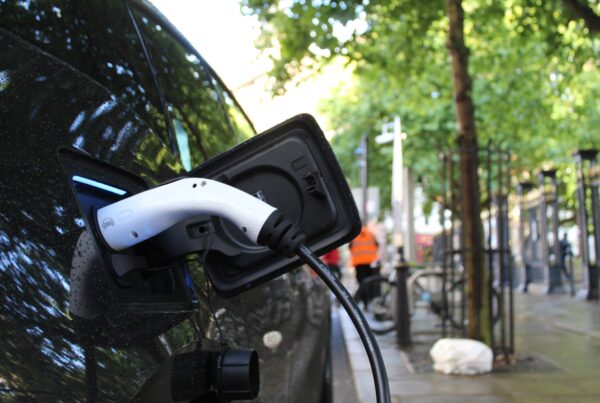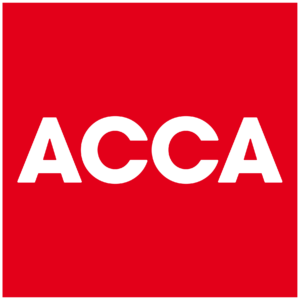Your Tax Advice
At CBHC we can advise on tax planning strategies for yourself and your family. We can help individuals in the Chelmsford area to realise their goals and maximise their personal wealth.
Looking to the future
It is likely that you will have a range of different financial requirements and goals. You might be looking to maximise your wealth so that you can enjoy more of your hard-earned money now and in retirement. You may need to pay for your children’s education, or to help support ageing parents. Or perhaps all of the above apply. As your accountants, we can suggest practical ways to help your objectives become reality.
Using allowances and exemptions
Each individual within your family is taxed separately, and is entitled to his or her own allowances and exemptions. The basic personal allowance (PA) for 2018/19 is £11,850, while the capital gains tax annual allowance for 2018/19 is £11,700.
A series of rate bands and allowances are assigned first to your earned income (this may include income from wages, self-employment, property income and pensions), then to your savings income, and finally to any dividend income.
Planning within the family
By using the available personal allowances and gains exemptions, a couple and their two children could have income and gains of at least £94,200 tax-free, and income up to £185,400 before paying any higher rate tax. Through careful tax planning, we could help you and your family to benefit from more of your wealth.
Your tax planning objectives should include taking advantage of tax-free opportunities, keeping marginal tax rates as low as possible, and maintaining a spread between income and capital.
Income tax: England, Wales and Northern Ireland (2018/19)
| Band (£) | Rate (%) |
|---|---|
| 0-34,500 | 20 |
| 34,501-150,000 | 40 |
| Over 150,000 | 45 |
Scottish resident taxpayers are subject to different tax rates and bands on non-savings and non-dividend income – see earlier for 2018/19 rates.
Savings income (2018/19)
Starting rate for savings: 0%
Starting rate limit for savings: £5,000
Dividends income (2018/19)
| Rate | % |
|---|---|
| Dividend ordinary rate | 7.5 |
| Dividend upper rate | 32.5 |
| Dividend additional rate | 38.1 |
Capital Gains Tax (2018/19)
| Total taxable income and gains | |
| Up to £34,500 | 10%* |
| From £34,501 | 20%* |
| Trust rate | 20%* |
*Depends on the level of income and gains. Gains are taxed after income and therefore utilise the remaining basic rate band. The rates are increased to 18% and 28% for carried interest and gains on residential property.
Marriage Allowance
Some married couples and civil partners are eligible for a Marriage Allowance, enabling spouses to transfer a fixed amount of their PA to their partner. The option is available to couples where neither pays tax at the higher or additional rate. If eligible, one partner will be able to transfer 10% of their PA to the other partner (£1,190 for the 2018/19 tax year). For those couples where one person does not use all of their PA the benefit will be up to £238 (20% of £1,190).
Personal Savings Allowance
The Personal Savings Allowance (PSA) relates to income such as bank and building society interest. The allowance applies for up to £1,000 of a basic rate taxpayer’s savings income, and up to £500 of a higher rate taxpayer’s savings income each year. The PSA provides basic and higher rate taxpayers with a tax saving of up to £200 each year. The allowance is not available for additional rate taxpayers and is in addition to the tax advantages available to savers from ISAs.
Dividend Tax Allowance
The Dividend Tax Allowance (DTA) reduces from £5,000 to £2,000 per annum in 2018/19. The DTA does not change the amount of income that is brought into the income tax computation. Instead it charges £2,000 of the dividend income at 0% tax – the dividend nil rate. The DTA does not reduce total income for tax purposes, and dividends within the allowance still count towards the appropriate basic or higher rate bands.
Case Study
Sandra is a single person with a gross 2018/19 income of £56,000 (made up of £26,000 earnings, £5,000 of interest and UK dividends of £25,000) and capital gains of £15,000 (assuming no other reliefs, etc). She would have a tax liability of £8,528.
| Earnings (£) | Interest (£) | UK Dividends (£) | Gains (£) | |
|---|---|---|---|---|
| Income and gains | 26,000 | 5,000 | 25,000 | 15,000 |
| Deduct: Personal allowance | -11,850 | |||
| Deduct: CGT exemption | -11,700 | |||
| Taxable | 14,150 | 5,000 | 25,000 | 3,300 |
| Tax at: | ||||
| 0% the PSA and DTA | 0 | 500 | 2,000 | |
| 20% on | 14,150 | 4,500 | ||
| 7.5% on | 13,350 | |||
| 32.5% on | 9,650 | |||
| 20% on | 3,300 | |||
| Totals | £2,830.00 | £900.00 | £4,137.50 | £660.00 |
| Total tax liability | £8,527.50 | |||
Transferring assets
Planning can be hindered by the potential for tax charges to arise when assets are moved between members of the family. Most gifts are potentially taxable as if they were disposals at market value, with a resulting exposure to CGT and IHT. However, special rules govern the transfer of assets between spouses. In many cases for both CGT and IHT there is no tax charge, but there are some exceptions – please contact us for further advice. In addition, gifts must be outright to be effective for tax, and must not comprise a right only to income. Careful timing and advance discussion with us are essential.
The ‘hidden’ 45% and 60% rates
The top rate of income tax, for those with taxable income in excess of £150,000, is 45% (38.1% for dividends). The PA is scaled back if ‘adjusted net income’ exceeds £100,000, being reduced by £1 for every £2 of income in excess of that limit. This means that an individual with total taxable income of £123,700 or more will not be entitled to any PA. This gives an effective tax rate on this slice of income of 60%. It may be possible to reduce your taxable income and retain your allowances, if approached with due consideration, eg. by making pension contributions or Gift Aid donations. Contact us now for advice on minimising the impact of the top tax rates.
High Income Child Benefit Charge
A charge arises on a taxpayer who has adjusted net income over £50,000 in a tax year where either they or their partner are in receipt of Child Benefit for the year. Where both partners have adjusted net income in excess of £50,000 the charge applies to the partner with the higher income.
The income tax charge applies at a rate of 1% of the full Child Benefit award for each £100 of income between £50,000 and £60,000. The charge on taxpayers with income above £60,000 will be equal to the amount of Child Benefit paid. Claimants may elect not to receive Child Benefit if they or their partner do not wish to pay the charge. Equalising income can help to reduce the charge for some families.
Case Study
Mark and Elizabeth have two children and receive £1,789 Child Benefit for 2018/19. Elizabeth has little income. Mark expects his adjusted net income to be £55,000. On this basis the tax charge will be £895. This is calculated as £1,789 x 50% (£55,000 – £50,000 = £5,000/£100 x 1%).
If Mark can reduce his income by a further £5,000 no charge would arise. This could be achieved by transferring investments to Elizabeth or by making additional pension or Gift Aid payments.
Cap on reliefs
There is a ‘cap’ on certain otherwise unlimited tax reliefs (excluding charitable donations) of the greater of £50,000 and 25% of your income. This cap applies to relief for trading losses and certain types of qualifying interest.
Giving your children a good start
Funding university and saving up a deposit for a first home are increasingly expensive prospects, so the sooner you start planning, the better. All children have their own PA, so income up to £11,850 escapes tax this year, as long as it does not originate from parental gifts. If income from parental gifts exceeds £100 (gross), the parent is taxed on it unless the child has reached 18, or married. Parental gifts could be invested to produce tax-free income, or in a Cash or Stocks and Shares Junior Individual Savings Account (JISA) to help build a fund to help offset university expenses and minimise debts. The £100 limit does not apply to gifts into JISAs or National Savings Children’s Bonds.
Generation skipping
If your child is grown up and financially secure, it may be worth ‘skipping’ a generation as income from capital gifted by grandparents or more remote relatives will usually be taxed as the child’s, as will income distributions from a trust funded by such capital.
Marriage breakdown
Maintenance payments do not usually qualify for tax relief. The special CGT and IHT treatment for transfers between spouses applies throughout the tax year in which separation occurs. For CGT, transfers in subsequent years are dealt with under the rules for disposals between connected persons, with the disposal treated as a sale at market value, which could result in substantial chargeable gains. For IHT, transfers remain exempt until the decree absolute. Timing is crucial; we can assist you.
A contingency plan
Contingency planning could help to protect your family if you die or become incapacitated. This might include taking out adequate insurance cover, perhaps with life assurance written into trust to ensure quick access to funds. It is also essential to make a Will. We also strongly recommend that you and your spouse:
- Make a living Will (also called ‘advance decisions’)
- so that your wishes are clear with regard to medical treatment in the event that, for example, you were seriously injured following an accident
- Execute a lasting power of attorney
- so that if you become unable to manage your affairs, as a result of an accident or illness, responsibility will pass to a person of your choosing.
Remember to tell your spouse, your parents, and your business partners where your Will and related documents are kept. If you are passing on responsibility for managing your affairs, it might be advisable to talk matters through with them.
Unclaimed assets?
Billions of pounds of assets lie unclaimed in the UK! To see if you have lost assets contact the Unclaimed Assets Register on 0333 000 0182 or visit www.uar.co.uk (NB: a charge applies for this service). To find out if you have an unclaimed Premium Bond prize, call 08085 007 007 or visit www.nsandi.com.
Non-UK domiciles
A UK resident and domiciled individual is taxed on worldwide income and gains. Non-UK domiciles who are UK resident can claim the remittance basis of taxation in respect of foreign income and gains with the effect that they are only taxed if foreign income and gains are brought into the UK. The non-UK domicile is also favourably treated for IHT as they only pay IHT in respect of UK assets as opposed to their worldwide assets.
However, an individual who has been resident for at least 15 of the last 20 tax years will be deemed UK domiciled for all tax purposes. In addition, those who had a UK domicile at the date of their birth will revert to having a UK domicile for tax purposes whenever they are resident in the UK, even if under general law they have acquired a domicile in another country.
| Checklist: Financial protection strategies | Self | Spouse |
|---|---|---|
| Essential: | ||
| Will | ||
| Living Will | ||
| Lasting power of attorney | ||
| Life assurance | ||
| Keep papers in a safe place – and make sure other people know where they are! | ||
| Seriously consider: | ||
| Income, mortgage and loan protection insurance | ||
| Tax-efficient estate planning | ||
| Planning for the transfer of your business | ||
| Funeral arrangements and expenses | ||
| A tax-efficient gift strategy | ||
Your next steps: contact us to discuss…
- Making the most of allowances and reliefs
- Ensuring that your tax liability is kept to a minimum within the law
- Using savings, capital and other vehicles to give your children a better start in life
- Writing a Will
- Life insurance and obtaining disability and critical illness insurance
- Tax-efficient savings and investments
If you are in the Chelmsford area and would like advice on personal and family tax planning strategies, please contact CBHC.
For tailored advice on how to best manage your personal and business finances, get in touch with us today and find out about how CBHC can help you do more with your money.









